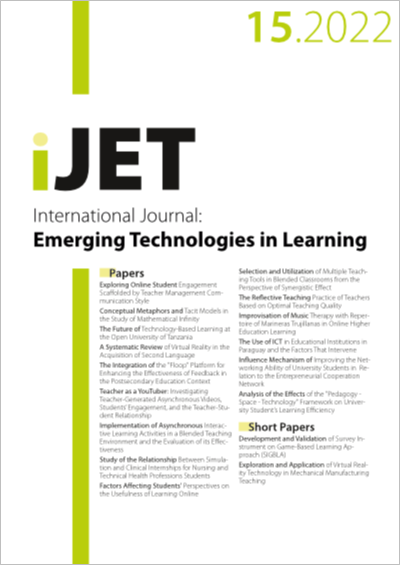Factors Affecting Students' Perspectives on the Usefulness of Learning Online
DOI:
https://doi.org/10.3991/ijet.v17i15.33243Keywords:
TAM, learning styles, learners’ e-learning self-efficacy, online learning, higher educationAbstract
The more students perceive the usefulness of the learning mode, the more they accept it, hence inference to their learning success. The purpose of the study is to identify factors that impact students’ perspectives on the usefulness of learning online in their learning process based on the Technology Acceptance Model. Learners’ styles and their e-learning self-efficacy were integrated into the model to explore the relationships between these factors and their perceived usefulness of learning online. A questionnaire survey was administered to 356 voluntary students of a private university in Vietnam. Data analysis methods include the Cronbach’s alpha test to examine the scales’ reliability, Confirmatory Factor Analysis method to determine the factors of learners’ learning online styles, and the structural equation modeling method to estimate the correlations between the dependent and independent constructs. The results indicate that four in six learn-ers’ learning online styles had a significant relationship with perceived useful-ness. In particular, tactile and group factors, and the Individual factor have direct-ly and indirectly positive effects on perceived usefulness respectively while Kin-aesthetic factor has a direct negative effect on perceived usefulness. The other fac-tors such as visual and auditory show no relationship with perceived usefulness. Learners’ e-learning self-efficacy and perceived ease of use components have a direct and positive impact on perceived usefulness. Pedagogical implications and limitations of the study are also discussed.
Downloads
Published
How to Cite
Issue
Section
License
Copyright (c) 2022 Tuong Cao Dinh, Sang Minh Vo

This work is licensed under a Creative Commons Attribution 4.0 International License.



